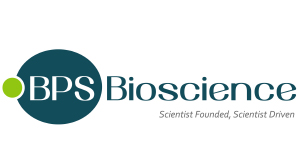EGF Recombinant
EGF Recombinant
SKU
BPS90201-3
Packaging Unit
1000 µg
Manufacturer
BPS Bioscience
Availability:
loading...
Price is loading...
Products from BPS Bioscience require a minimum order value above 400€
Encompassing Amino Acids: 971- 1023
Application: Useful for cell culture and for the study of signaling pathways. Also useful for receptor binding studies, screening inhibitors, and selectivity profiling.
Background: EGF (Epidermal Growth Factor) is a growth factor of the EGF family, involved in cell growth and differentiation. It binds to EGFR (EGF receptor) with high affinity, inducing the formation of a dimer with tyrosine kinase activity able to regulate downstream signaling pathways. Abnormal expression of EGF and hyperactivation of EGFR can result in multiple diseases, ranging from psoriasis to schizophrenia. EGFR activation is also involved in cancer, with multiple strategies aimed at its inhibition. EGF can be used in the treatment of diabetic foot ulcers due to its wound healing roles. It has also attracted interest as a skin anti-aging product, as it can stimulate fibroblasts to produce collagen and elastin. EGF is thus a protein with multiple clinically relevant applications, and further studies will bring its importance to light.
Biological Activity: ED50 is < 0.1 ng/ml. ED50 was determined by a cell proliferation assay using BALB/c 3T3 cells
Description: Recombinant human EGF (Epidermal Growth Factor), encompassing amino acids 971- 1023. This protein was affinity purified.
Endotoxin Level: < 1EU per µg of EGF as determined by the LAL method.
Format: lyophilized protein
Formulation: Lyophilized from a sterile filtered solution containing 10 mM Phosphate Buffered Saline (PBS), pH 7.4, 138 mM NaCl, and 2.7 mM KCl.
Genbank: NM_001963
Purity: ≥98% by SDS-PAGE and HPLC analysis.
Reconstitution: Reconstitute at 0.1-1.0 mg/ml in distilled water. This solution can then be diluted into other buffers. To maximize product collection from vial surface, vortex briefly and then spin down to recollect the liquid.
Storage Stability: ≥2 years (lyophilized) at -20°C.
Tags: none
Uniprot: P01133
Warnings: Avoid freeze/thaw cycles.
Biosafety Level: Not applicable (BSL-1)
References: 1. Su, X., et al. J. Biol. Chem. 282 (29),21278-21284 (2007)
2. Jin, G., et al. Cancer Sci. 98 (6), 864-868 (2007)
Encompassing Amino Acids: 971- 1023
Application: Useful for cell culture and for the study of signaling pathways. Also useful for receptor binding studies, screening inhibitors, and selectivity profiling.
Background: EGF (Epidermal Growth Factor) is a growth factor of the EGF family, involved in cell growth and differentiation. It binds to EGFR (EGF receptor) with high affinity, inducing the formation of a dimer with tyrosine kinase activity able to regulate downstream signaling pathways. Abnormal expression of EGF and hyperactivation of EGFR can result in multiple diseases, ranging from psoriasis to schizophrenia. EGFR activation is also involved in cancer, with multiple strategies aimed at its inhibition. EGF can be used in the treatment of diabetic foot ulcers due to its wound healing roles. It has also attracted interest as a skin anti-aging product, as it can stimulate fibroblasts to produce collagen and elastin. EGF is thus a protein with multiple clinically relevant applications, and further studies will bring its importance to light.
Biological Activity: ED50 is < 0.1 ng/ml. ED50 was determined by a cell proliferation assay using BALB/c 3T3 cells
Description: Recombinant human EGF (Epidermal Growth Factor), encompassing amino acids 971- 1023. This protein was affinity purified.
Endotoxin Level: < 1EU per µg of EGF as determined by the LAL method.
Format: lyophilized protein
Formulation: Lyophilized from a sterile filtered solution containing 10 mM Phosphate Buffered Saline (PBS), pH 7.4, 138 mM NaCl, and 2.7 mM KCl.
Genbank: NM_001963
Purity: ≥98% by SDS-PAGE and HPLC analysis.
Reconstitution: Reconstitute at 0.1-1.0 mg/ml in distilled water. This solution can then be diluted into other buffers. To maximize product collection from vial surface, vortex briefly and then spin down to recollect the liquid.
Storage Stability: ≥2 years (lyophilized) at -20°C.
Tags: none
Uniprot: P01133
Warnings: Avoid freeze/thaw cycles.
Biosafety Level: Not applicable (BSL-1)
References: 1. Su, X., et al. J. Biol. Chem. 282 (29),21278-21284 (2007)
2. Jin, G., et al. Cancer Sci. 98 (6), 864-868 (2007)
| SKU | BPS90201-3 |
|---|---|
| Manufacturer | BPS Bioscience |
| Manufacturer SKU | 90201-3 |
| Package Unit | 1000 µg |
| Quantity Unit | STK |
| Host | Escherichia Coli |
| Product information (PDF) |
|
| MSDS (PDF) |
|

 Deutsch
Deutsch










